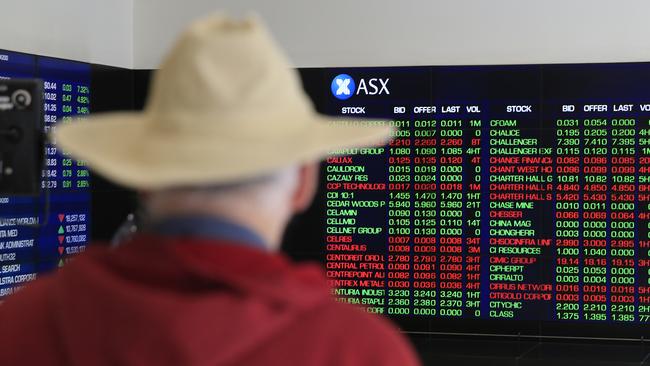Active fund managers not worth the trouble with value back in fashion
A switch to value stocks over growth stocks is meant to mean good times for stockpickers – don’t fall for it.

Stock picking is no more successful when value is beating growth than when it’s the other way around.
That’s important to remember right now, since it increasingly appears that value has finally turned the corner in its epic battle against growth.
Value stocks, of course, are those trading for the lowest ratios of price to various measures of financial performance, such as book value and earnings. Growth stocks are those trading for the highest such ratios.
Though value stocks’ return relative to growth has stalled over the past couple of weeks, they are still well ahead for the period extending back to the end of last August – more than nine months ago. That’s long enough to convince many that value’s outperformance is more than a flash in the pan. Anticipating this trend will continue, some champions of active management are insisting that index funds are therefore to be avoided.
It’s a convenient narrative, which, if true, justifies paying the higher management fees that active managers charge relative to index funds. Don’t fall for it.
To be sure, it certainly appears as though these champions of active management have history on their side. That’s because far more value funds beat the S&P 500 index when value is dominant than when growth is beating value. It’s overwhelming, in fact.
Consider the 500 or so actively managed open-end mutual funds on Wall Street that Morningstar Direct puts in the value camp.
Since the end of last August, which is when value began its recent outperformance, virtually all of them – some 95 per cent – have beaten the S&P 500. During the previous five years, during which growth far outpaced value, hardly any of these value funds (fewer than 1 per cent) beat the S&P 500.
Yet these statistics. compelling as they might seem, still don’t support the stock-picking narrative. That’s because the S&P 500 is an inappropriate benchmark for judging the performance of a value mutual fund.
The index is dominated by large-cap growth stocks, so comparing value fund managers to it tells you nothing about their stock-picking abilities.
Consider the five stocks that dominate Wall Street – Facebook, Amazon.com, Apple, Microsoft, and Google parent Alphabet, which together represent more than 20 per cent of the total market cap of the index. Each has a sky-high price-to-book ratio, the hallmark of a growth stock. Their average price-to-book ratio is more than 15, according to FactSet, which is more than five times the 2.7 average ratio for the S&P 500 Value index.
The proper benchmark for judging the stock-picking abilities of a value manager is, of course, an index containing value stocks. And relative to their proper benchmarks, only a precious few value funds come out ahead.
Lawrence Tint, the former US CEO of BGI, the organisation that created iShares (now part of BlackRock), goes even further. He argues that there never will be a period in which a majority of actively managed value funds beat their appropriate benchmarks.
In an interview, he insisted that if it ever appeared to the contrary, then we can be assured that we’re judging the funds against the wrong benchmarks.
To support this bold claim, Tint refers to a seminal 1991 article in the Financial Analysts Journal: The Arithmetic of Active Management. The article was written by William Sharpe, who won the Nobel prize in Economics in 1990. Tint at the time was president of Sharpe-Tint, a consulting firm.
In the article, Sharpe demonstrated that beating the market is a zero-sum game before transaction costs, and a negative-sum game net of those fees.
“On average, therefore, actively managed mutual funds must lag the performance of a passive index,” Tint says.
Tint’s argument speaks directly to the second of the bogus reasons that are being used to justify active management in a value-dominated market: that the universe of value stocks contains an especially wide range of good and bad investments, creating more potential for a value-stock picker to add value by avoiding the worst issues.
In effect, this argument is that the market for value stocks is especially inefficient and therefore easier to beat.
This argument doesn’t appear to hold water. There would seem to be just as wide a range in the growth stock universe between stocks whose growth can be bought at a reasonable price and those that are wildly overvalued.
Growth-fund managers can easily argue that active management is just as important for them, if not more so, than for value-fund managers.
Tint responds that his conclusion still applies even if it’s true that the market for value stocks is especially inefficient.
“If one value manager picks stocks that beat their benchmark,” Tint argues, “then someone else must lose. And after you take transaction costs into account, they on average will have lagged the market.”
Barron’s







To join the conversation, please log in. Don't have an account? Register
Join the conversation, you are commenting as Logout